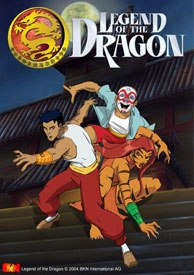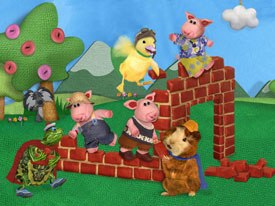Chara Campanella talks to Josh Selig, Stephanie Graziano and Tom Tataranowicz about what it takes to make the leap from a solo entity to studio owner.
What does it take to make the leap from a solo entity to studio owner? Josh Selig, Stephanie Graziano and Tom Tataranowicz are all people who did just that and all three have plenty of insight on the subject.
Josh Selig is the founder/president of Little Airplane Productions, producers of Oobi!, The Wonder Pets! and Go, Baby! Selig has received 10 Emmy awards for his work as a writer on Sesame Street and won a Humanitas Award for his work as head writer on Little Bill.

Stephanie Graziano launched Graz Ent. with her husband in 1992. The studio has produced more than 400 half hours of children's entertainment, videos, commercials and video games, including The Tick, G.I. Joe Extreme, My Little Pony Tale, Street Fighter and Skeleton Warriors.
Tom Tataranowicz started Tom T. Animation in 1999 and, in 2001, expanded it into Gang of Seven Animation. Between the two studios, he has led production on Milo's Bug Quest, Baldo, Biker Mice From Mars and Legend of the Dragon among others. In 1992, Tom received an Emmy nomination as director on Bobby's World.
Chara Campanella: What was the impetus behind opening your own production company?
Josh Selig: I started Little Airplane because I wanted to create and produce my own shows. I had spent over a decade at Sesame Street and I was starting to go a little nuts trying to come up with new ways for Big Bird to talk about the letter of the day. I didn't know how to start a business, but I knew I had to do it.
Stephanie Graziano: I can do this and I should do this and I need to do this. I was working on a couple productions for a specific client through another company and I was given an opportunity to take the new productions and, because they trusted my husband and I to produce them, they helped fund us to start. My husband and I being partners in it, we had completely different strengths and personalities and I knew because of that, that we could be successful.

Tom Tataranowicz: I was looking at the business about 1999 or so and the business was in kind of a strange place. Everybody was being laid off, budgets coming down, people weren't working. I looked around and said, this isn't good. Ageism is hitting this business. What I want to do is try to get a crew together of people who know what their doing that will just get products done as they should be done -- top quality at a good price.
CC: Briefly describe your first year of business.
JS: I started Little Airplane with $5,000. Our first year was spent making short live-action films and Oobi! interstitials for Noggin. I had one person on my staff, Lori Sherman, and we had a small office full of Ikea furniture. I couldn't afford to pay Lori or myself a regular salary so if there was money left in a budget she would get a third, I would get a third and Little Airplane would get a third. We were poor and small but we were proud and happy.
SG: I think that anyone who's going to start their own business has to experience every position that you're going to hire someone for. In the first year I had between 40 and 50 employees at any given point and I hand did the payroll. We started out with a little capital. Enough capital to put the studio together. Not enough capital to pay myself, but that's pretty traditional when you start a business. You have to be prepared for that.
TT: I formed Tom T. Animation to work with Sunwoo on their series, Milo's Bug Quest. After that I was contacted by Univision to do Baldo in 2000. I pulled together a few guys, Rich Arons and Dennis Venizelos and we worked together really well. Baldo came and went and Dennis and I were sitting around at lunch and I said, "We've all got ideas. We should get a bunch of guys that seem good, pull together, develop things on our own and go out there and try and sell this stuff and see what we can do." Just as we were rolling, we were contacted to do Legend of the Dragon and that firmed it up as G7. It could have stayed Tom T. Animation, but the Gang of Seven thing made more sense to me.

CC: What were some of your more successful choices?
JS: My biggest and best choice was to focus exclusively on creating and producing original content for the preschool market. I have also hired some amazing people, including my brilliant creative director, Jennifer Oxley. Jennifer brought animation to Little Airplane and developed the "photo-puppetry" style of animation we now use on The Wonder Pets!
SG: People. Every person that we hired we felt had a personality that would work within the company as we were structuring it and that we had enough trust in that we would give them the key. Ultimately, at the end of the day when you deliver a show, it's not about who heads the studio, it's about everyone who contributed to it.
TT: Being a union shop was really important. I feel we really got good people. For example, on Son of the Mask, the 2D sequence, because we were a union shop, the guy who animated that sequence was Eric Goldberg, who is a big name and very talented.
CC: What were some of the growing pains of the first year?

JS: During our first year we believed that any deal was a good deal. We could have gotten better guidance on the business affairs front. But there is nothing I would have done differently. Our mistakes taught us everything we needed to know in order to not make them again.
SG: If I were to look back at the very first year, the worst choice we made was space. We hadn't really thought out the aspect of expanding and contracting quite well enough and so we were always running out of room. And then we'd have to get into a lease on space that we didn't need six months later. So that was a learning experience.
TT: The difficult thing was finding out who really fits. Because it isn't always talent. Anyone who's worth paying attention to has talent. The growing pains of a business that is multiple partnered is finding out who fits and who doesn't fit.
CC: What are some of the specific challenges you face as a business owner?
JS: There is certainly a lot more stress associated with owning and running a business than there was with writing. This past year I have been actively delegating all the parts of the business that I do not like or am not good at. This has lightened my load considerably and allowed me to get back to the creative parts of the business that I really enjoy, including the writing.
SG: For me the biggest difference was, at the end of the day, I felt so responsible for my staff. When we were faced with potential layoffs I felt responsible for keeping things moving and I think because I that I took on too much for myself. There's a deadly balance there between keeping a studio running and burning yourself out.

TT: Budgets. I do budgets. One of our partners said, "Oh Tom, he loves to do budgets." I said, "Where did you get that? I can just do them." It's also keeping people going on projects of our own that we have to develop. When work is in house and when we're working on a production, there's no problem. But when you're working on your own stuff, you kind of get a little lax.
CC: What is the advice you would give artists and writers who are considering opening independent studios or production companies?
JS: My advice would be to live within your means, get a good lawyer and a good accountant, and try to make work that you will forever be proud of.
SG: I am a huge advocate of business ownership. The biggest piece of advice I'd give people is do your homework. Really make sure you understand what it's going to take and that you're up to the task. When the tough times come, you've got to be tough.
TT: Make sure you have work before you open. That's the important thing. The difference between success and failure is you have to do one percent more than everyone else to succeed. You don't have to be 80% better, you just have to be a tiny little bit and you stand out just by that.
Chara Campanella is a writer/producer with a background in both animation and reality TV. Currently, she is working on the independent animated feature, Time Piglets.









